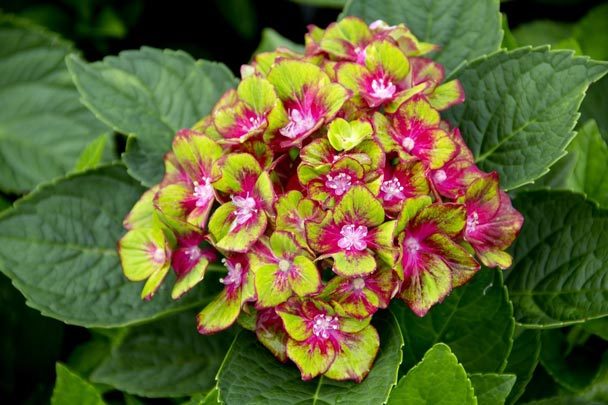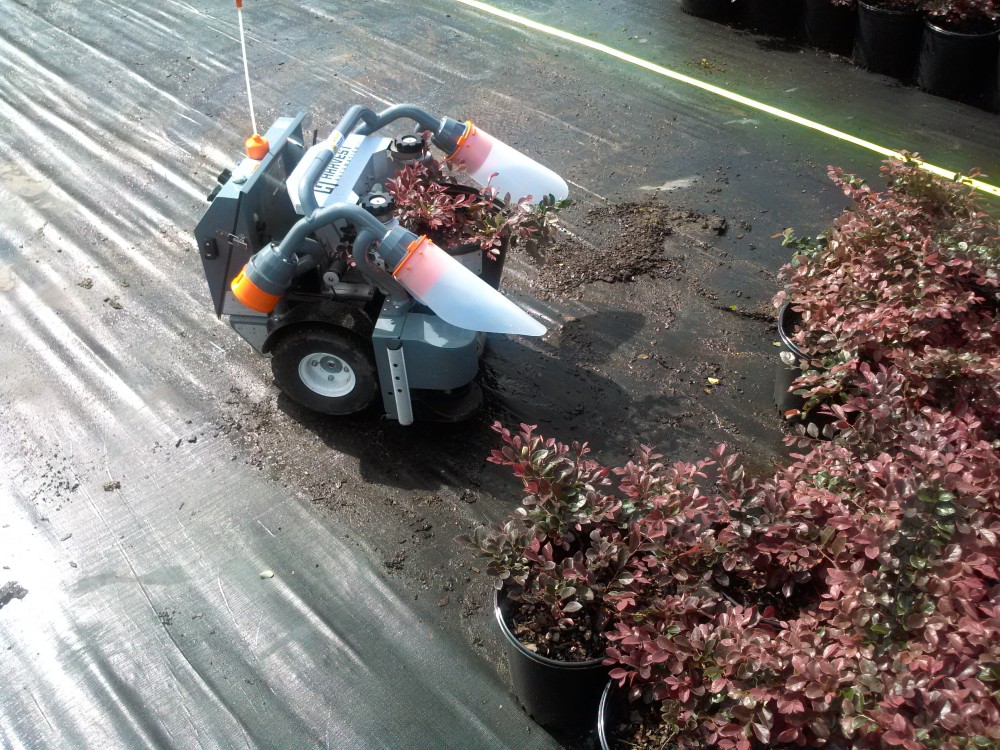A benefit of traveling to visit nurseries growing next year’s plants is the opportunity to evaluate new introductions and others that are a few years off from being ready for market. Sometimes these are old plants that have been reintroduced, but others are hybrids or sports (mutations) that are new and different (though not always significantly different). The question remains whether these will prove to be good plants in the garden, and since I’ve seen a few instances where plants are not “garden tested” sufficiently before their introduction, there is an inexact science to bringing these to the garden center for homeowners to purchase.
Many new introductions that I’ve seen are not significantly different from other plants already available, but one brand must have a blue, pink, or white summer flowering hydrangea, a variegated abelia, and on and on to keep up with their competition. The introduction might vary only slightly, except for the branded pot that it’s grown in. So, the choices become more difficult and confusing for everyone to decide which plants to choose to feature in their garden center, or in their garden. From dozens of new plants I’ve seen this summer, a few caught my eye, and will be in my garden (and perhaps in your’s too) as quickly as I can arrange delivery.
‘Pistachio’ hydrangea (Hydrangea macrophylla “Horwack’, above) is a reblooming mophead with unique red and green flowers. In a sea of blue, pink, and white blooms, these stand out. At first, I thought they were perhaps a bit garish, but the color grew on me, so I’m anxious for these to get up to size and ready to ship in another month. There will be few blooms or none to be expected upon their arrival, but I’m happier to have a prized plant in hand rather than waiting for next year.
Mophead hydrangeas have proven to be nearly indestructible in my garden, so long as they’re not planted in the areas that have remained wet with standing water (even in mid summer). They will tolerate a bit too much shade, or enough sun that the foliage wilts in the heat of the day. I’m confident that I can find prime real estate with just a bit of afternoon shade to properly feature this striking new hydrangea.
I recently planted a few of the new hypericum, ‘Pumpkin’ (Hypericum inodorum ‘Kolmapuki’) that caught my eye in a Virginia nursery. It’s late spring blooms (above) are slightly smaller than the typical St. John’s Wort, but these are followed by berries that turn to orange (below) in late summer. The shrubby, mounding ‘Pumpkin’ grows to thirty inches tall and wide, and I expect these will become quite an attraction. I chose ‘Pumpkin’ rather than the red berried ‘Red Star’, but as I consider it further I’ll probably plant a few of these also. St. John’s Wort is a tough, carefree ground cover, and though ‘Pumpkin’ grows a little taller, it will be easy to find a place for such a splendid shrub.
One of my favorite shrubs in the garden is the dark leafed ninebark ‘Diablo’ (Physocarpus opulifolius ‘Diabolo’, below), but it grows so large and lanky that it’s been relegated to the back of the garden. The stems of ‘Diablo’ arch to ten feet tall, and though this size is inappropriate for many gardens, I’ve thought that a more compact version would be an exceptional shrub. And, ‘Little Devil’ is the answer. Its foliage is not as dark, but it is much more compact, and it should work in just about any garden. The leaves and flowers are proportionately smaller, and I’m overjoyed to have this in the garden.
A completely different side of the question of “is the newest thing better, or not?”, is the recent use of robots to space container grown plants in a nursery. This is a repetitive process that consumes many labor hours for the nursery, and the robots are an attempt to provide a cost efficient, technological advantage to replace jobs that few people seem to want.
I first saw these little gadgets a few years ago at a nursery in Florida where a test was being conducted by The Robotics Institute at Carnegie Mellon University. The group of scientists overseeing the study were equipped with laptops and various sensors to track the goings-on of the robots. By the time of this demonstration, years of background had already been invested in this project, and today the same nursery is using robots they have purchased through a commercial manufacturer.
The robots are slower than a person doing the same task, and uneven terrain and battery life require that a person still be available to supervise, so the cost benefit to the nursery is still in question. But, there’s much more to the consider in this equation than just the pay rate of an hourly employee, so this is an interesting development to gain efficiency in a business that has long relied exclusively on manual labor.
I’ll be overjoyed when a robot can be developed to take over the repetitive chores in my garden, but I’m not betting that one of these little fellows will take over pulling weeds for me anytime soon.
I really enjoy reading your blog! I have added it to a list of recommended blogs for these peer awards. You can see the list at: http://unlockingthegate.wordpress.com/2013/08/06/peer-awards/
Thanks for entertaining and educating me, and keep writing!
The Pistachio is nice! Not the usual, anyway. Great photos and great post!